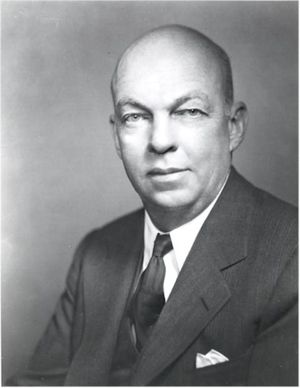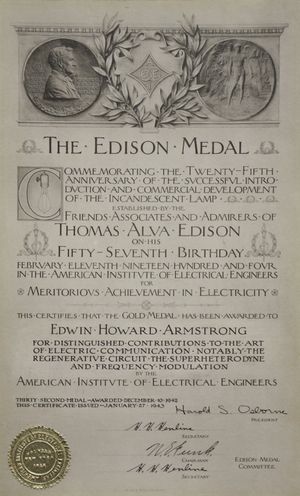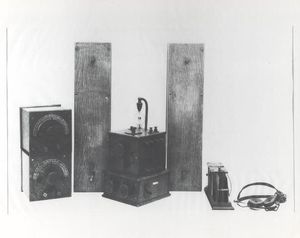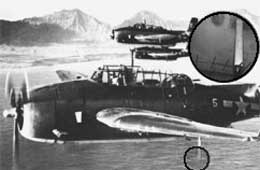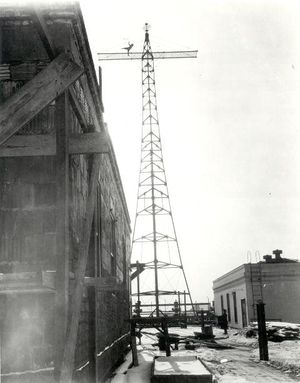Edwin H. Armstrong: Difference between revisions
No edit summary |
No edit summary |
||
| Line 8: | Line 8: | ||
<p>Armstrong was born on December 18, 1890, in New York City, where he was to spend much of his professional career.He graduated with a degree in electrical engineering from Columbia University in 1913, and observed the phenomenon of regenerative feedback in vacuum-tube circuits while still an undergraduate.At Columbia, he came under the influence of the legendary professor-inventor, [[Michael Pupin|Michael I. Pupin]], who served as a role model for Armstrong and became an effective promoter of the young inventor. In 1915 Armstrong presented an influential paper on regenerative amplifiers and oscillators to the [[IRE History 1912-1963|IRE]]. Subsequently, regenerative feedback was incorporated into a comprehensive engineering science developed by [[Oral-History:Harold S. Black|Harold Black]], [[Harry Nyquist|Harry Nyquist]], [[Hendrik W. Bode|Hendrik Bode]], and others in the period between 1915 and 1940. </p> | <p>Armstrong was born on December 18, 1890, in New York City, where he was to spend much of his professional career.He graduated with a degree in electrical engineering from Columbia University in 1913, and observed the phenomenon of regenerative feedback in vacuum-tube circuits while still an undergraduate.At Columbia, he came under the influence of the legendary professor-inventor, [[Michael Pupin|Michael I. Pupin]], who served as a role model for Armstrong and became an effective promoter of the young inventor. In 1915 Armstrong presented an influential paper on regenerative amplifiers and oscillators to the [[IRE History 1912-1963|IRE]]. Subsequently, regenerative feedback was incorporated into a comprehensive engineering science developed by [[Oral-History:Harold S. Black|Harold Black]], [[Harry Nyquist|Harry Nyquist]], [[Hendrik W. Bode|Hendrik Bode]], and others in the period between 1915 and 1940. </p> | ||
<p>[[Image:Armstrong regenerative radio 0452.jpg|thumb|left|Armstrong Regenerative Radio]] </p> | |||
<p>Armstrong conceived the superheterodyne radio receiver principle in 1918, while serving in the Army Signal Corps in France.He played a key role in the commercialization of the invention during the early 1920's. [[RCA (Radio Corporation of America)|The Radio Corporation of America (RCA)]] used his superheterodyne patent to monopolize the market for this type of receiver until 1930. The superheterodyne eventually extended its domain far beyond commercial broadcast receivers and, for example, proved ideal for microwave radar receivers developed during World War II. </p> | <p>Armstrong conceived the superheterodyne radio receiver principle in 1918, while serving in the Army Signal Corps in France.He played a key role in the commercialization of the invention during the early 1920's. [[RCA (Radio Corporation of America)|The Radio Corporation of America (RCA)]] used his superheterodyne patent to monopolize the market for this type of receiver until 1930. The superheterodyne eventually extended its domain far beyond commercial broadcast receivers and, for example, proved ideal for microwave radar receivers developed during World War II. </p> | ||
| Line 22: | Line 24: | ||
<p>Armstrong's papers are held by Columbia University, where thanks to the efforts of Professor Emeritus (and IEEE Life Fellow) Mischa Schwartz, and a grant from the IEEE Foundation, they were (as of 2010) being processed to make them more accessible to future scholars. [http://www.nytimes.com/2010/04/19/business/media/19archives.html?scp=1&sq=Saving%20the%20Neglected%20History&st=cse A New York Times article] gave this project, and thereby Armstrong's life, well deserved attention. </p> | <p>Armstrong's papers are held by Columbia University, where thanks to the efforts of Professor Emeritus (and IEEE Life Fellow) Mischa Schwartz, and a grant from the IEEE Foundation, they were (as of 2010) being processed to make them more accessible to future scholars. [http://www.nytimes.com/2010/04/19/business/media/19archives.html?scp=1&sq=Saving%20the%20Neglected%20History&st=cse A New York Times article] gave this project, and thereby Armstrong's life, well deserved attention. </p> | ||
<p></p> | |||
<p></p> | |||
<p></p> | |||
<p></p> | |||
<p></p> | |||
<p></p> | <p></p> | ||
Revision as of 16:56, 30 November 2010
Edwin H. Armstrong
Edwin H. Armstrong is widely regarded as one of the foremost contributors to the field of radio-electronics. Among his principal contributions were regenerative feedback circuits, the superheterodyne radio receiver, and a frequency-modulation radio broadcasting system. He was inducted into the National Inventors Hall of Fame in 1980
Armstrong was born on December 18, 1890, in New York City, where he was to spend much of his professional career.He graduated with a degree in electrical engineering from Columbia University in 1913, and observed the phenomenon of regenerative feedback in vacuum-tube circuits while still an undergraduate.At Columbia, he came under the influence of the legendary professor-inventor, Michael I. Pupin, who served as a role model for Armstrong and became an effective promoter of the young inventor. In 1915 Armstrong presented an influential paper on regenerative amplifiers and oscillators to the IRE. Subsequently, regenerative feedback was incorporated into a comprehensive engineering science developed by Harold Black, Harry Nyquist, Hendrik Bode, and others in the period between 1915 and 1940.
Armstrong conceived the superheterodyne radio receiver principle in 1918, while serving in the Army Signal Corps in France.He played a key role in the commercialization of the invention during the early 1920's. The Radio Corporation of America (RCA) used his superheterodyne patent to monopolize the market for this type of receiver until 1930. The superheterodyne eventually extended its domain far beyond commercial broadcast receivers and, for example, proved ideal for microwave radar receivers developed during World War II.
In 1933 Armstrong was granted patents on a frequency-modulation (FM) system that he promoted as a superior alternative to the established amplitude-modulation (AM) broadcasting service. He drew on his own financial resources in a determined effort to establish FM broadcasting until the War intervened.His crusade for FM received additional setbacks in the post-war years from certain regulatory decisions by the Federal Communications Commission. In 1948 he brought suit against RCA for patent infringement, but the case was not solved until Armstrong's tragic demise early in 1954.
Armstrong was highly esteemed by a generation of radio-electronics engineers and amateur radio enthusiasts. He received the first Medal of Honor of the IRE in 1917 "In recognition of his work and publications dealing with the action of the oscillating and non-oscillating audion." In 1942, Armstrong was awarded the AIEE's Edison Medal 'For distinguished contributions to the art of electric communication, notably the regenerative circuit, the superheterodyne and frequency modulation.'
The importance of his legacy might be appreciated by means of a thought experiment of imagining what the field of telecommunications would be like without regenerative feedback, the superheterodyne receiver, and FM.
Armstrong's papers are held by Columbia University, where thanks to the efforts of Professor Emeritus (and IEEE Life Fellow) Mischa Schwartz, and a grant from the IEEE Foundation, they were (as of 2010) being processed to make them more accessible to future scholars. A New York Times article gave this project, and thereby Armstrong's life, well deserved attention.
